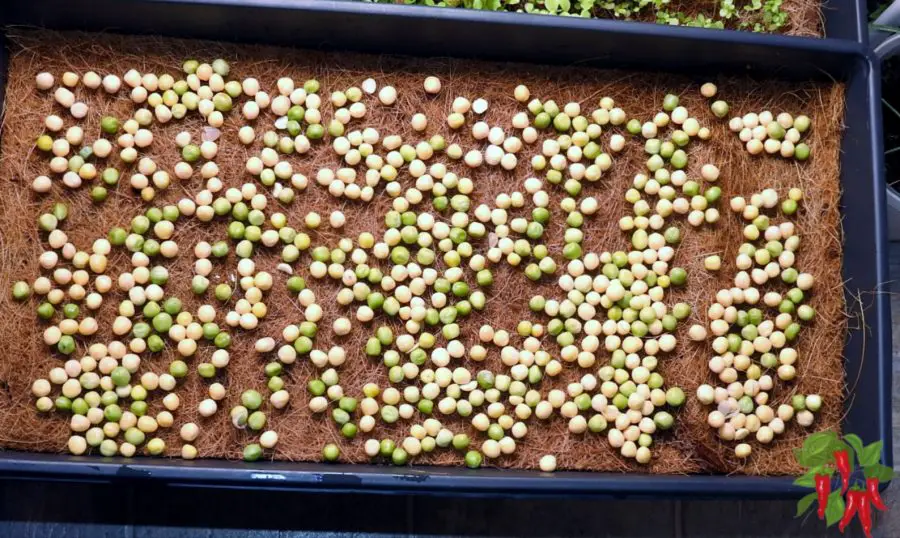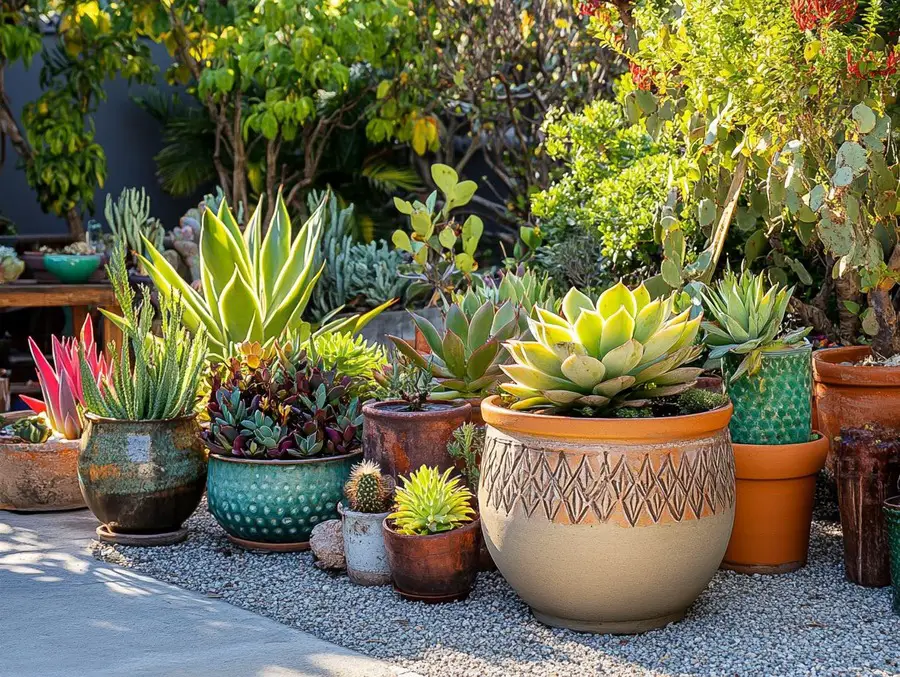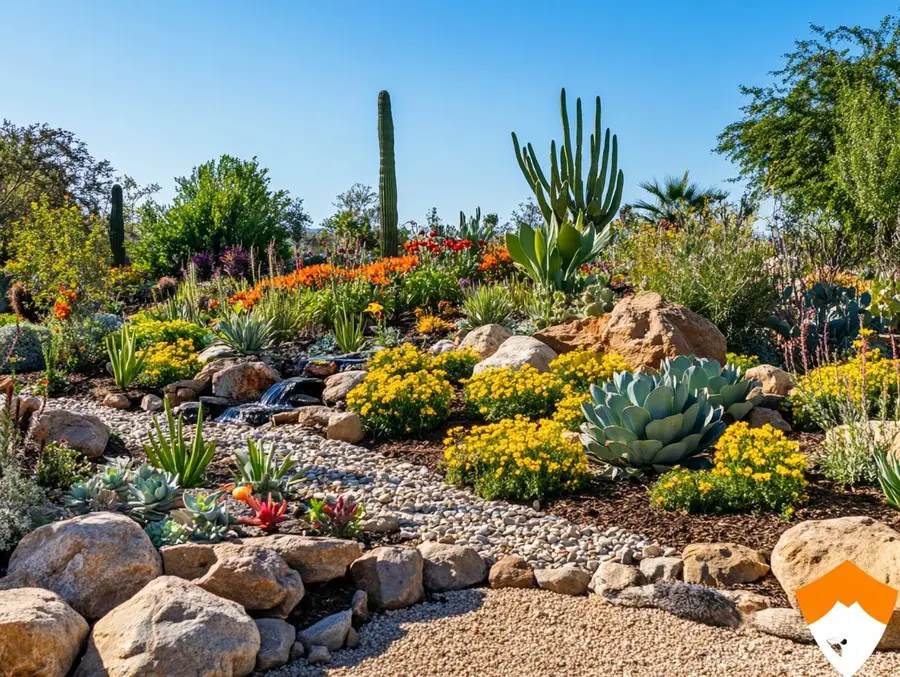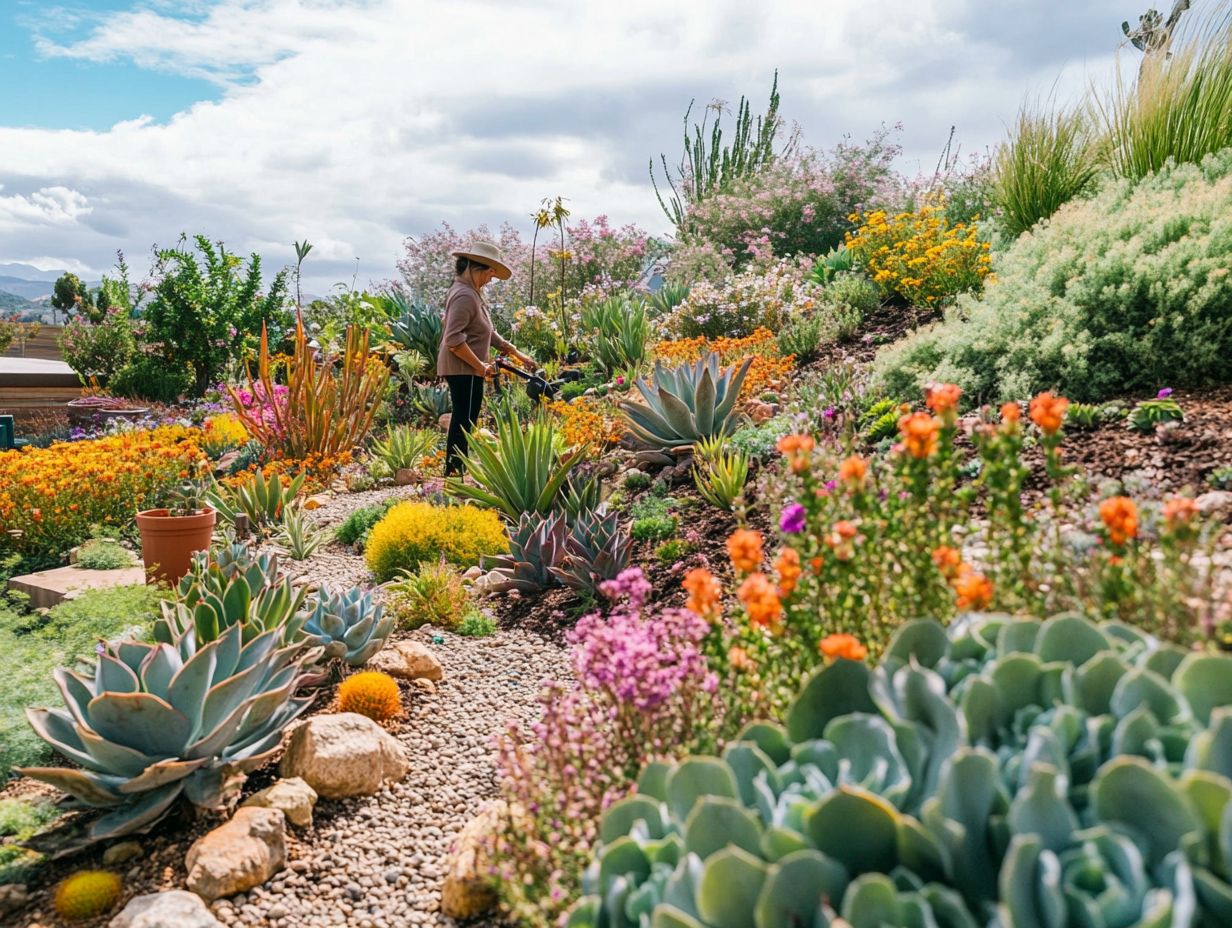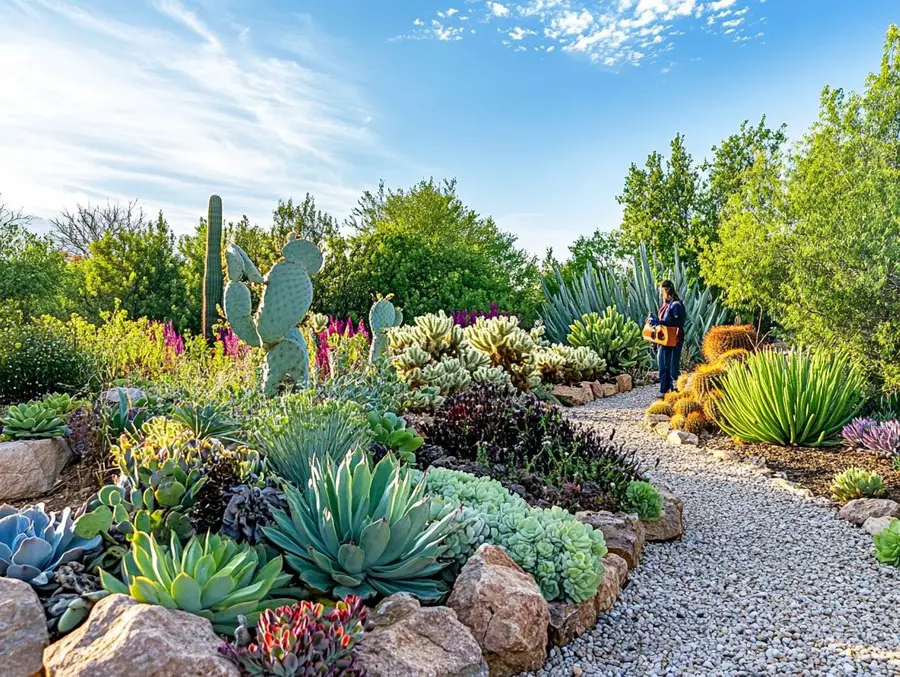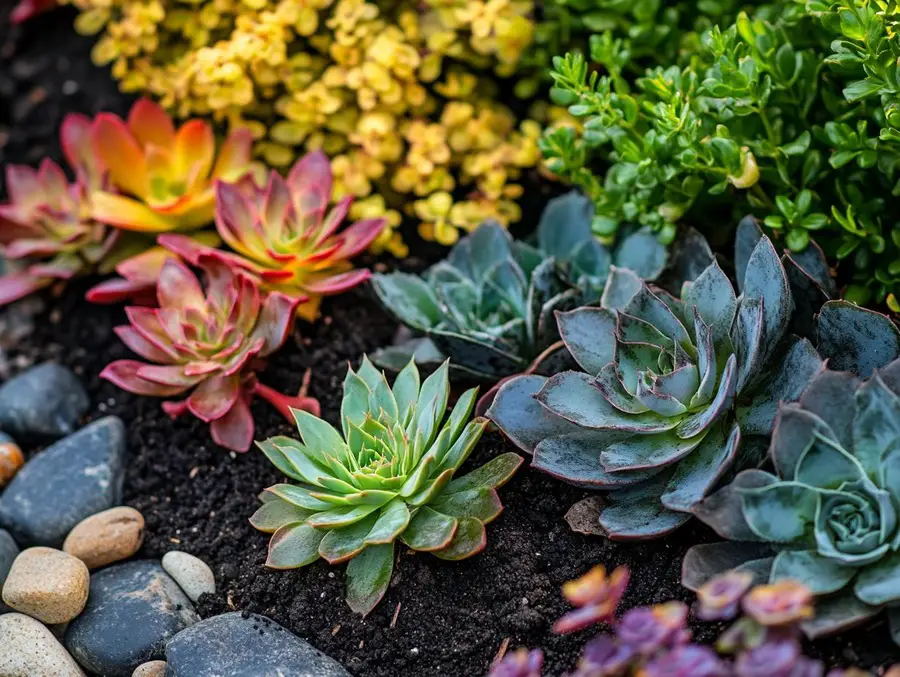We use affiliate links. If you purchase something using one of these links, we may receive compensation or commission.
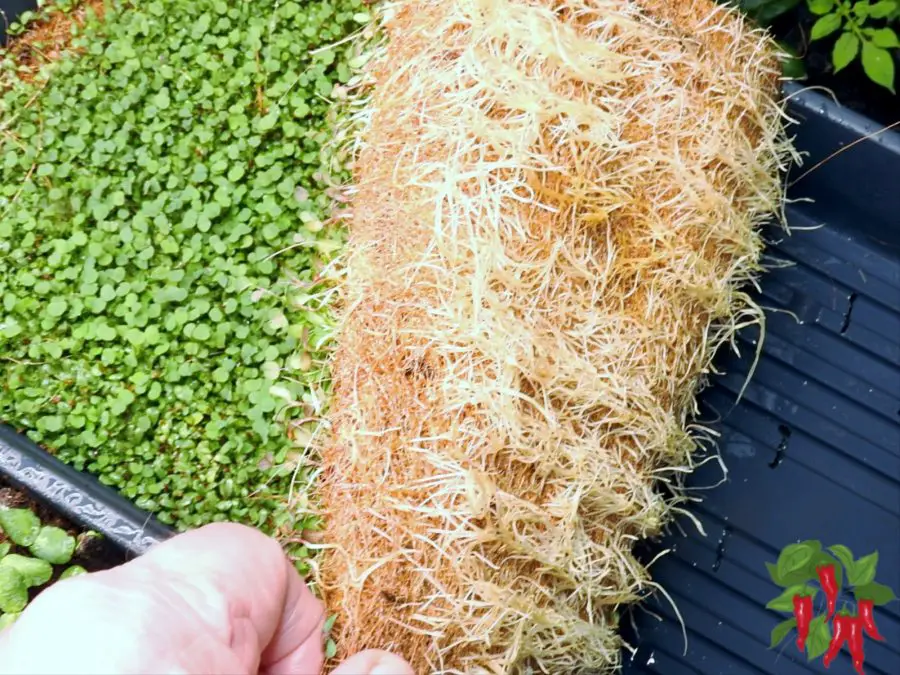
Discover how to grow microgreens without soil! Dive into our easy, step-by-step guide for a clean, efficient, and space-saving way to boost your greens intake.
Growing Microgreens Without Soil
Key Takeaways:
- Growing microgreens without soil involves using hydroponic systems, coco coir, or coco mats as a medium.
- This method offers a clean, efficient way to cultivate nutrient-dense greens in a controlled environment, ensuring faster growth, higher nutrient content, and no soil-borne diseases.
- It’s perfect for urban gardeners and those with limited space.
Ever wondered about how to grow microgreens without soil? You’re in the right place!
We’re here to show you a mess-free, straightforward method to fill your plates with these nutrient-packed greens.
Get ready to transform your kitchen into a mini garden with our simple guide. Let’s grow some greens!
What Are Microgreens?
Microgreens are young vegetable greens that are harvested at an early stage of growth, typically within 7-21 days after sowing.
Known for their vibrant colors, intense flavors, and concentrated nutrient content, microgreens are packed with essential vitamins and minerals, making them a popular choice for health-conscious individuals.
These tiny greens are versatile additions to salads, sandwiches, and smoothies, providing a flavorful and nutritious boost to dishes.
They require minimal space to grow and can thrive in soil or hydroponic systems, offering flexibility to urban gardeners and commercial growers alike.
Why Grow Microgreens Without Soil?
Growing microgreens without soil has gained popularity due to its efficiency, cleanliness, and ability to control nutrient intake.
Hydroponic systems are particularly favored for microgreen cultivation as they provide a controlled environment for optimal growth.
This method allows for precise nutrient delivery directly to the plant roots, ensuring they receive the exact amount of essential elements they need.
Hydroponics conserve water compared to traditional soil-based methods, making them an environmentally friendly choice.
On the other hand, the paper towel method offers a simple and accessible way to start growing microgreens at home.
By using paper towels as a medium, beginners can easily monitor germination and growth progress.
This method is low-cost and requires minimal equipment, making it an attractive option for those new to indoor gardening.
The controlled nutrient delivery in soilless systems is a key advantage, as it helps prevent nutrient runoff and allows for better absorption by the plants.
This can result in healthier, more nutrient-dense microgreens that are not only delicious but also packed with essential vitamins and minerals.
What Are the Benefits of Growing Microgreens Without Soil?
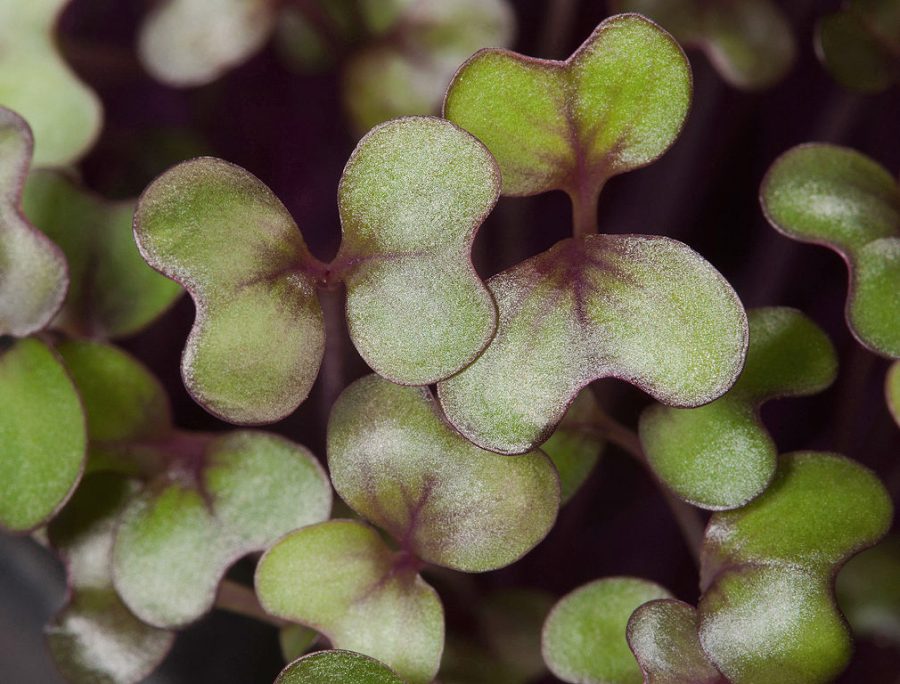
Growing microgreens without soil offers numerous benefits, including enhanced nutrient absorption, faster growth rates, and reduced risk of soil-borne diseases.
One significant advantage of cultivating microgreens hydroponically is the exceptional retention of nutrients in the plants, as they have direct access to the nutrient solution.
This results in higher nutrient density in the harvested greens, making them more nutritious for consumption.
By eliminating soil from the equation, growers can effectively prevent the spread of soil-borne diseases that can harm the crops, promoting healthier and more vibrant microgreens.
Regarding choosing a growing medium for soilless microgreen cultivation, coconut coir stands out as a popular choice due to its excellent water retention capabilities and sustainability.
The fibrous structure of coconut coir provides optimal aeration for the roots, facilitating healthy and robust growth of microgreens such as pea shoots and broccoli varieties.
No Mess
One of the key advantages of growing microgreens without soil is the elimination of soil-related mess and debris, providing a cleaner and more hygienic growing environment.
Soilless microgreen cultivation greatly reduces the chances of harboring pests and diseases commonly associated with traditional soil-based methods.
Without the need for soil, there is less risk of contamination, making the entire process more sanitary.
The absence of soil eliminates the need for constant soil maintenance, such as weeding and soil amendments, streamlining the cultivation process and saving both time and effort.
The controlled environment of soilless cultivation also allows for better monitoring and control of nutrient levels, ensuring optimal growth conditions for the microgreens.
No Pests or Weeds
By opting for soilless growing techniques, microgreen growers can effectively minimize the risks of pest infestations and weed growth, ensuring healthier and uncontaminated harvests.
One of the significant benefits of growing microgreens without soil is the reduced need for pesticides.
Since pests and weeds thrive in traditional soil environments, eliminating soil from the equation naturally decreases the presence of these unwanted intruders.
Without soil, the risk of pathogen contamination is significantly lower, providing a cleaner and more hygienic growing environment.
This method also helps in maintaining the overall hygiene standards of the produce, ensuring that the microgreens harvested are not only free from pests but also safe for consumption.
Faster Growth
Soilless methods of growing microgreens promote faster growth rates, allowing for quicker harvest cycles and a more continuous supply of fresh greens.
One of the primary advantages of utilizing soilless cultivation techniques for microgreens is the remarkable acceleration in growth they offer.
By eliminating the reliance on traditional soil, these methods enhance nutrient uptake, resulting in expedited development of the plants.
This rapid maturation translates into significantly reduced time from seed sowing to harvest, enabling farmers to turn around fresh batches of microgreens at a speed that is simply not achievable through conventional soil-based methods.
The rapid growth rates facilitated by hydroponic or other non-soil techniques mean that growers can maintain a consistent, uninterrupted flow of microgreens throughout the year.
This continuous supply not only caters to the demands of consumers but also provides a more sustainable and efficient approach to cultivating these nutritious greens.
Higher Nutrient Content
Growing microgreens without soil through hydroponic methods often result in higher nutrient concentrations and enhanced bioavailability, leading to nutritionally dense greens.
Hydroponic systems allow for precise control over the nutrient solution provided to the plants, ensuring they receive the optimal balance of essential vitamins and minerals.
This method eliminates the variability that may come from soil quality, leading to consistently high nutrient levels in the microgreens.
Enhanced bioavailability refers to the increased absorption and utilization of nutrients by the human body.
Research suggests that hydroponically grown microgreens can have higher levels of certain vitamins, such as vitamin C and vitamin K, making them even more beneficial for health-conscious consumers.
What Are the Different Methods for Growing Microgreens Without Soil?
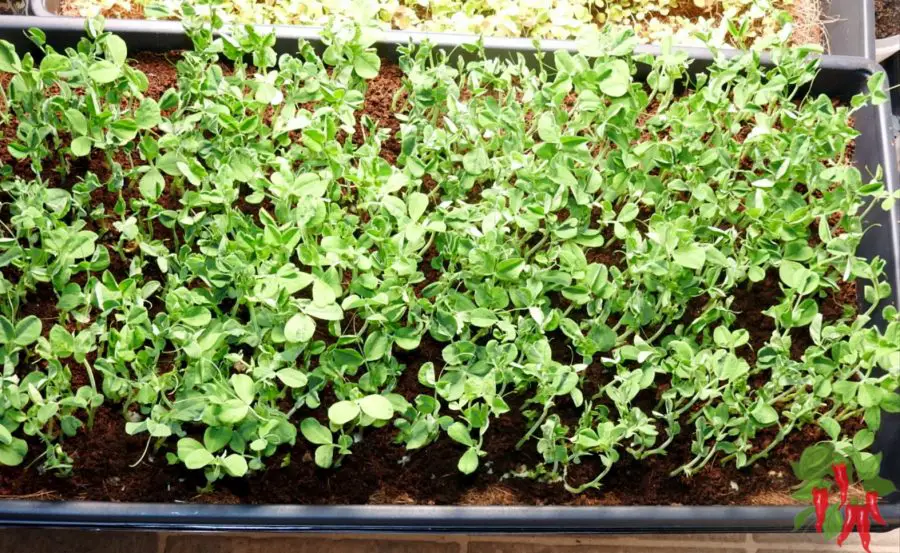
Various innovative methods exist for cultivating microgreens without soil using alternative growing mediums like coconut coir, jute, and hemp grow mats.
Hydroponics involves growing plants using a nutrient-rich water solution with inert media.
- Coconut coir, derived from coconut husks, is a sustainable alternative medium that retains moisture well and offers excellent aeration.
- Peat moss, known for its water retention capabilities, provides a stable base for root development.
Each method offers unique benefits and challenges, catering to various preferences and environmental considerations.
Hydroponics
Hydroponic systems are a popular choice for growing microgreens without soil, as they provide a controlled environment for nutrient delivery and efficient plant development.
One of the key techniques in hydroponic microgreen cultivation is the preparation of nutrient solutions specifically tailored to the needs of the plants.
These solutions typically contain essential minerals like nitrogen, phosphorus, and potassium, crucial for healthy growth.
Maintaining the pH balance of the nutrient solution is vital to ensure optimal nutrient uptake by the microgreens.
Providing the right amount and quality of light is essential for photosynthesis and overall plant health in a hydroponic system.
Using Coco Coir Mats
Using Coconut Coir or Peat Moss
Alternative growing mediums like coconut coir and peat moss offer organic and sustainable options for cultivating microgreens without soil, providing adequate support and moisture retention for healthy plant development.
Coconut coir, a byproduct of coconut processing, is highly valued for its eco-friendly nature due to its renewable source and biodegradability.
It not only reduces waste but also enhances soil structure when used as a growing medium.
Peat moss, on the other hand, is known for its excellent moisture retention properties, ensuring consistent hydration for delicate microgreen roots.
The application of these growing mediums in microgreen cultivation involves a simple process.
Microgreen seeds are sown directly onto a layer of pre-moistened coconut coir or peat moss, allowing the seeds to germinate and the plants to grow without the need for soil.
This method is not only efficient but also minimizes the risk of soil-borne diseases, making it a preferred choice for indoor gardening and urban farming initiatives.
It is messier than the mat system but is still a great way to grow microgreens.
How to Grow Microgreens Without Soil Using the Hydroponic Method?
Growing microgreens without soil using the hydroponic method involves selecting the right container, preparing nutrient solutions, sowing seeds, ensuring proper lighting, and maintaining optimal pH levels for robust plant growth.
Regarding container selection, opt for trays or shallow dishes with good drainage to prevent waterlogging.
For nutrient solution preparation, mix water with a hydroponic fertilizer according to the manufacturer’s instructions.
Before sowing the seeds, soak them in water for a few hours to kick-start germination.
Place the trays under adequate lighting, such as grow lights or near a window receiving sufficient sunlight.
Regularly monitor the pH levels of the nutrient solution as it directly affects nutrient absorption.
Maintain a pH balance between 5.5 and 6.5 for optimal microgreen growth.
Choose a Container
Selecting an appropriate container is crucial for hydroponic microgreen cultivation, ensuring sufficient space for root growth.
I prefer using 1020 trays but any clean flat shallow container will work.
Regarding hydroponic systems for growing microgreens, the container plays a significant role in the success of your crops.
Good drainage is essential to prevent waterlogged roots, while adequate aeration helps oxygen reach the roots, promoting healthy growth.
I like to use two trays of the same size. The top tray has drainage holes while the bottom one does not.
This allows me to bottom water my trays keeping the seeds from being disturbed or getting wet.
Consider the size and depth of the container to accommodate the developing root system of your microgreens, ensuring they have enough space to thrive.
Add Nutrient Solution
Prepare and add a balanced nutrient solution to the hydroponic setup to provide essential elements for seed germination and sustained microgreen growth.
Optimal nutrient solution preparation is crucial in hydroponic microgreen cultivation as it directly impacts the growth and development of the seeds.
The nutrient solution should contain a blend of macro and micro elements such as nitrogen, phosphorus, potassium, calcium, magnesium, and iron to support the different stages of plant growth.
It is essential to maintain the correct pH level of the solution to ensure nutrient availability.
Proper seed hydration before planting plays a vital role in initiating the germination process and promoting healthy root development in the microgreens.
Soak Seeds
Soaking large microgreen seeds like peas or sunflowers before sowing is a critical step in the hydroponic method, ensuring proper hydration and priming for successful germination and root establishment.
I generally do not soak small seeds because it makes them harder to sow evenly. If the grow medium is moist they will hydrate on their own.
When seeds are soaked, they absorb water, kick-starting the germination process by activating enzymes and initiating metabolic activities that boost nutrient uptake and growth.
This hydration step aids in softening the seed coat, making it easier for the emerging roots to penetrate the seed casing.
By enhancing seed viability through soaking, the chances of successful germination increase significantly, resulting in healthier and more vigorous microgreens.
The soaking process can vary based on seed type, with some seeds requiring longer soaking periods than others to achieve optimal results.
Place Seeds in Container
Sow the pre-soaked microgreen seeds in the chosen hydroponic container, ensuring even distribution and adequate spacing for optimal growth and nutrient uptake.
When placing the seeds in the container, make sure to scatter them uniformly across the substrate surface.
This approach helps prevent overcrowding and allows each seedling ample space to develop roots and access essential nutrients.
Consider the size of the seeds when determining the ideal spacing between them.
Larger seeds may require more distance between each other to prevent competition for resources, whereas smaller seeds can be placed closer together.
For optimal results, create a precise layout plan before sowing the seeds to achieve a visually appealing and efficiently managed hydroponic setup.
Provide Adequate Light and Water
Maintain a consistent light source and adequate water supply for hydroponic microgreens, ensuring proper photosynthesis and hydration levels to support healthy plant growth.
Light exposure plays a crucial role in the growth of hydroponic microgreens.
The type and intensity of light, as well as the photoperiod, directly impact plant development.
LED lights are often preferred for their energy efficiency and ability to provide the necessary spectrum for photosynthesis.
Adjusting the light duration to mimic natural daylight patterns can optimize plant growth and enhance nutrient absorption.
Regarding water management, maintaining a balanced irrigation schedule is key.
Overwatering can lead to root rot, while underwatering can stunt growth.
Implementing a reliable irrigation routine that delivers water evenly to the roots is vital for sustained growth and nutrient uptake.
What Are Some Tips for Successful Microgreen Growth Without Soil?
To ensure successful microgreen growth without soil, it is essential to use quality seeds, monitor moisture levels, provide adequate light and temperature, and harvest at the right time to avoid contamination by pests and pathogens.
One vital aspect of soilless microgreen cultivation is selecting premium non-GMO seeds specifically suited for this purpose, ensuring the best germination rates and overall plant health.
It’s crucial to maintain proper moisture levels throughout the growing process to support seedling development without causing water-logging issues.
Additionally, light exposure is key for photosynthesis and healthy growth.
You should place trays in well-lit areas or consider supplemental grow lights for consistent illumination.
Controlling the temperature within the optimal range promotes steady growth and prevents stress on the plants.
Implementing effective pest and pathogen prevention strategies is essential to safeguard your microgreens.
Regularly inspecting for signs of infestation and using natural remedies or barriers can help maintain a pest-free environment.
Use Quality Seeds
Starting with high-quality seeds is crucial for successful soilless microgreen cultivation, as it reduces the risk of introducing pests and pathogens to the growing environment.
Regarding seed quality, purity plays a vital role in determining the initial health and growth potential of microgreens.
Pure seeds are free from contaminants, ensuring a clean start for your cultivation process.
Seed viability is essential as it indicates the potential for germination and establishment of healthy plants.
Disease resistance in seeds is another critical factor as it helps in safeguarding the microgreens against common pathogens, promoting a robust and thriving crop.
Monitor Moisture Levels
Regularly monitoring and adjusting moisture levels in the growing environment is essential for preventing water-related issues and maintaining optimal conditions for microgreen growth.
Hydration balance is crucial to ensure that the microgreens receive adequate water without drowning the roots.
Humidity control plays a key role in preventing mold or fungal growth, which can thrive in overly moist conditions.
Regarding irrigation practices, employing a method that allows for consistent, even watering is important for uniform growth across all microgreens.
You can use double trays and bottom watering or a spray bottle for misting.
Using a soilless mixture can help with water retention while still providing adequate drainage to prevent waterlogged roots.
Provide Adequate Light and Temperature
Consistent light exposure and proper temperature regulation are critical factors for successful soilless microgreen cultivation, supporting photosynthesis, and metabolic processes for robust plant development.
Regarding light exposure, microgreens have specific requirements based on the color spectrum.
Blue and red wavelengths are essential for optimal growth and development, as they are absorbed more efficiently by chlorophyll.
Providing a balanced spectrum of light throughout the day aids in achieving healthy and vibrant microgreens.
Photoperiods are equally important, with most microgreens benefiting from 12-16 hours of light exposure daily.
Concurrently, maintaining the temperature within the appropriate range of 65-75°F is crucial.
Extreme temperatures can hinder physiological processes, while consistency fosters steady growth.
Striking the right balance between light and temperature ensures the vitality and quality of soilless microgreens.
Harvest at the Right Time
Timing the harvest correctly is essential in soilless microgreen cultivation to ensure peak flavor, nutritional content, and overall quality of the harvested greens.
Regarding determining the perfect time for harvesting your microgreens, visual cues play a crucial role.
Look for the presence of the first true leaves, indicating that the plant has matured sufficiently to be harvested.
These leaves are larger and more developed compared to the initial cotyledon leaves.
Pay attention to the overall size of the microgreens – they should be around 1-3 inches in height.
A rich coloration is also a telling sign of readiness for harvest, reflecting optimal nutrient content.
In terms of taste indicators, performing taste tests on a few leaves can provide valuable information.
The flavors should be concentrated and vibrant, signaling that the microgreens are at their flavor peak.
Bitterness or astringency can indicate over-maturity, while blandness might suggest that harvesting was premature.
It’s a delicate balance that requires careful attention to detail.
Once the harvest timing is on point, it’s crucial to preserve the freshness of the microgreens post-harvest.
One effective technique is to store them in a sealed container lined with damp paper towels in the refrigerator.
If you use the mat method you can keep your microgreens fresher longer by harvesting them attached to the coco mat before cutting them later.
This method helps maintain the moisture levels necessary for prolonging shelf life, ensuring that your harvested microgreens retain their crispness and flavor for longer periods.
Frequently Asked Questions
How can I grow microgreens without soil?
To grow microgreens without soil, you can use a hydroponic system. This involves using a growing medium such as coconut coir or perlite and providing nutrients through a water-based solution.
What are the benefits of growing microgreens without soil?
Growing microgreens without soil can help reduce the risk of soil-borne diseases and pests. It can also be a more efficient and sustainable way to grow microgreens, as it uses less water and space compared to traditional soil-based methods.
Can I use any type of container to grow microgreens without soil?
Yes, you can use a variety of containers for growing microgreens without soil. Some popular options include trays, jars, and even recycled materials like egg cartons or plastic containers.
Do I need any special equipment to grow microgreens without soil?
While it is not necessary, using a grow light can greatly benefit the growth of microgreens without soil. This is because they do not have access to natural sunlight and may not receive enough light through a window.
How often should I water my microgreens when growing without soil?
The frequency of watering will depend on the type of growing medium you use. Typically, it is recommended to water every 1-2 days or when the growing medium feels dry to the touch.
Can I use the same hydroponic system to grow different types of microgreens?
Yes, you can use the same hydroponic system to grow different types of microgreens. However, it is important to clean and sterilize the system between each use to prevent cross-contamination and ensure the best growing conditions for each type of microgreen.
Conclusion
As we conclude our exploration of growing microgreens without soil, it’s clear that this innovative method offers numerous advantages for gardeners and health enthusiasts alike. Through the information presented, we’ve uncovered the simplicity, efficiency, and sustainability of soilless cultivation, providing a comprehensive guide to embarking on your own microgreen gardening journey.
Key Takeaways
- Microgreens’ Versatility and Nutritional Value: These tiny plants pack a punch in terms of nutrition and flavor, offering a unique way to enhance your diet without requiring extensive space or resources.
- Benefits of Soilless Cultivation: From faster growth rates and higher nutrient content to the elimination of soil-borne pests and diseases, soilless methods like hydroponics, aquaponics, and the use of alternative mediums like coco coir or peat moss present a cleaner, more controlled way to grow microgreens.
- Innovative Growing Techniques: We delved into hydroponics, aquaponics, aeroponics, and the use of coco mats, each offering its own set of advantages, from water conservation to reduced pest management.
- Practical Growing Tips: From selecting the right container and nutrient solution to ensuring adequate light and temperature, we’ve provided step-by-step instructions and tips to help you achieve success in your soilless microgreen cultivation.
Final Thoughts
Growing microgreens without soil not only aligns with sustainable living practices but also opens up a world of gardening opportunities for those with limited space. Whether you’re a seasoned gardener or a curious beginner, the techniques discussed here can enhance your indoor gardening experience, offering a fresh, nutrient-rich harvest right from your windowsill or countertop.
Embrace the journey of soilless microgreen cultivation with enthusiasm and creativity. As you experiment with different methods and seeds, you’ll discover the joy and satisfaction of growing your own food in an eco-friendly and innovative way. The world of microgreens is vast and varied, and there’s no better time to start exploring it than now. Happy gardening!
Related Content
Visit my Amazon Influencer Page for videos and gardening products Grow Your Own Garden


